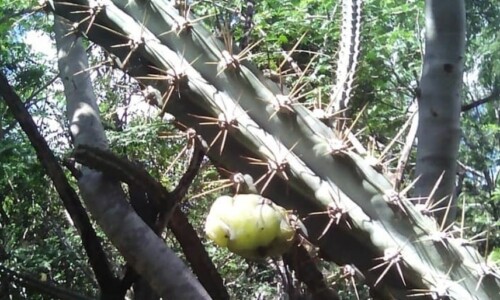Guest author: Manuel Molina
Introduction
Subpilocereus horrispinus (Backeb.) Backeb. [Cact. Succ. J. (Los Angeles) 23: 123. 1951] is a beautiful large plant with a restricted distribution. It is only found in the states of Falcon, Lara, and Zulia. The habitat photographs are courtesy of Paul Steven Tomafas and the photos of the two cultivated plants are from my (Manuel Molina) collection.
The Details
The literature and the internet have little information about this taxon. One reason it is difficult to find information about his cactus on the Web is that there are so many (possible) synonyms. Checking Tropicos and POWO, I found five possible synonyms: Cereus horrispinus, Pilosecreus horrispinus, P. wagenaarii, Subpilocereus ottonis, and S. wagenaarii. These were provided in confusing ways, and I am not sure they are actually synonyms. Thus, it was difficult for one to know which plant one is actually reading about. I did conclude that Subpilocereus is related to the genus Cereus.
The flowers are white and 9 cm long. Oval fruit changes from green to pink when it is ripe. Seeds are black.
S. horrispinus is found in subhumid, xerophytic forest, and is just one of the many understudied cacti of South America. Populations are threatened by agricultural practices, and more must be learned about this plant to protect it. The plant can be propagated by cuttings. But perhaps it is better to use seedlings if trying to introduce young plants into habitat. Seeds germinate well.




